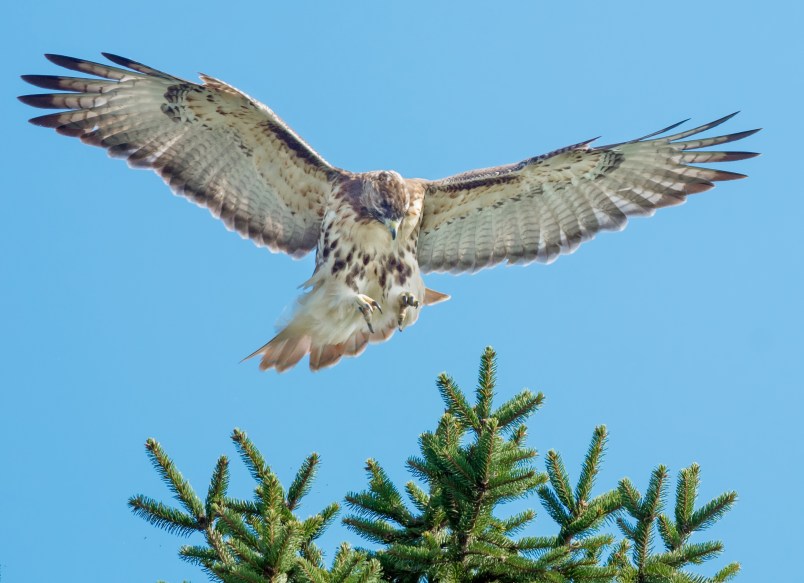NEW YORK (AP) — Scientists have produced a new family tree for nearly all species of birds alive today, drawing on a massive DNA analysis to gain insights into evolutionary history.
The tree was built by comparing the complete DNA codes, or genomes, of 48 species as varied as the bald eagle, the common cuckoo, two kinds of penguin, the downy woodpecker and the Anna’s hummingbird. They were chosen to represent branches that lead to most of the more than 10,000 living species.
Only three of those genomes had been decoded before, so 45 of the DNA codes were new.
The main results, reported by 200 scientists from 20 countries, were released Thursday by the journal Science. Here are some highlights.
EARLY SPLIT
Very early in the lineages leading to about 95 percent of today’s birds, the researchers propose that a split happened some 68 million to 69 million years ago. One branch leads to doves, flamingoes and a few other species, while the other branch leads to basically everything else. That implies, for example, that flamingoes are more closely related to pigeons than they are to pelicans or other water birds.
A second split followed soon after, so that the resulting four lineages faced and survived the brutal extinction some 66 million years ago that’s most famous for wiping out the dinosaurs, said Erich Jarvis of Duke University and the Howard Hughes Medical Institute, a lead author of the work.
LEARNING TO SING (OR SPEAK)
When a songbird sings, or a parrot says, “Polly wants a cracker,” or a baby says, “Mama,” it’s the result of learning by imitation. The study found that birds with this “vocal learning” ability share some similarities with humans in the activity of certain genes in the brain. So such birds might be useful for studying what genes are involved in human speech disorders like stuttering, said study author Andreas Pfenning of the Massachusetts Institute of Technology.
The new work couldn’t resolve the question of whether songbirds and parrots inherited vocal learning from the same ancestor, or whether the two lineages developed it separately.
ANCESTRAL PREDATOR
A large group of land birds may have all descended from an ancient hunter at the top of the food chain, the family tree indicates. The group includes not only falcons and eagles, but also parrots, woodpeckers and songbirds. The hawk-like curved bill of the parrot may be a lingering signature of predatory origins, Jarvis said.
LOST TEETH
Although birds are descended from dinosaurs, they have no teeth. Most previous studies have suggested the common ancestor of modern birds lacked teeth, but other work has disagreed. The new findings add support to the idea of a toothless common ancestor, because all birds sampled share some mutations that turn off five genes for building teeth.
Researchers estimate that teeth, or at least enamel-covered teeth, disappeared about 116 million years ago in the ancestry of birds. They suggest beaks replaced teeth in a two-step process. But it’s still not clear why beaks took over for teeth, said study author Robert Meredith, a biologist at Montclair State University in New Jersey.
BIRD EXPERTS REACT
Experts cautioned that with just 48 genomes so far, the tree is not complete and that further research could change what it indicates about the history of birds.
Yet, “this is a monumental achievement … a landmark,” said Town Peterson of the University of Kansas. “It’s going to begin fleshing out a backbone for understanding the evolutionary history of birds.”
The work provides the first compelling evidence for suspicions that many families of birds are much younger than scientists had thought, he said.
Shannon Hackett of the Field Museum in Chicago said she believes the project’s biggest contribution is providing so many bird genomes for study. That will greatly help scientists understand why birds look and sound the way they do, she said. “We’re just starting to go down those pathways for real now,” she said.







Ahhhh. An article for the birds.
Pretty fascinating. Cool article.
.,.
No…that would be three lineages. I think a few paragraphs may be missing here?
In any event, great news, and a radical improvement over the “ZOMG BUSH TIWNS!!11!” nonsense that occasionally appears here. I’ve always thought that if you want to run a political news site, which is essentially always bad news, since people, and especially political people, are always awful and stupid, you should leaven it with science news, which is always somewhat positive and is about what is best in humanity.
Okay, so here’s what is missing: the first split is between the early flightless birds (ratites and “terror birds”)* and all others. The second split is between galliforms (chickens, ducks, etc.) and all others. The third split is between this newly identified group “Columbea”: doves, flamingoes, etc. and all others, and with the “all others” there you have four groups heading in to the KT boundary.
*Edit: not Terror Birds – I always confuse Tinamous with Seriemas: the latter are related to Terror Birds.
I got your G-Gnome right here…
